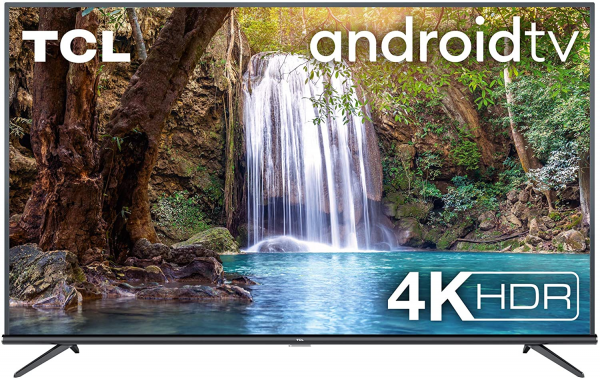TCL
TCL 55DP660: TCL's entry-level Android TV
Aprox. 587€
See specificationsThe TCL 55DP660 TV is a light version of the TCL 55DC760 that we have already tested. For example, it skips the audio part signed JBL, displays a slightly lower brightness peak and is content with a remote control. Nothing unacceptable, therefore.
Positive points
Correct image quality in SDR.
Native contrast.
Possibilities offered by Android TV (become more stable).
Google Cast built-in.
Bad points
Maximum brightness which limits the interest of HDR.
Viewing angles.
No microphone on the remote control.
Our review
Presentation
We went to the Cobra Parmentier store located in the 11th arrondissement of Paris to test the TCL 55DP660 television. This model has a 10-bit (8-bit + FRC) VA LCD panel displaying an Ultra HD definition of 3,840 x 2,160 px. The panel is content with a refresh rate of 50 Hz and a brightness peak limited to 320 cd / m² (against 400 cd / m² for the TCL 55DC760). The audio system is composed of two 8 W speakers. On the system side, TCL has Android TV in its latest version 8.0 with its lot of features.
The TCL 55DP660 TV is sold for around € 700, but is very often sold for less than € 650. It is also available in a 50 and 65 inch version at the respective prices of around € 500 and € 750. All these models have the same VA panel.
All the brightness and colorimetric measurements mentioned in this article were carried out with a SpectraCal C6-HDR probe and the CalMAN Ultimate software.
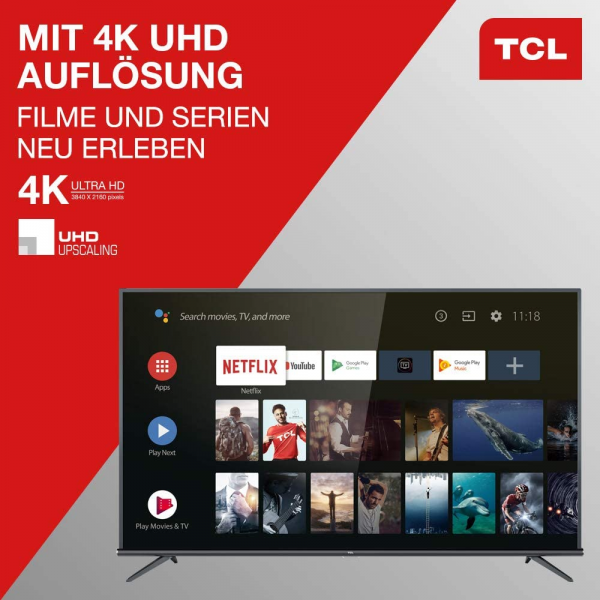
Image quality
This TCL television uses a VA panel which provides good contrast at the expense of narrower viewing angles than those of the IPS or Oled models. We measured the loss of brightness at 72% with an angle of 45 °. The best VA panels, like that of the Sony 65ZF9, can drop to 38%. The depth of the black is also limited on the sides since it goes from 0.03 cd / m² on the front to 0.13 cd / m² at 45 °. This results in a washed-out image as soon as one moves away from the axis.
Film mode is the one with the best rendering, but it is far from perfect. Indeed, with an average delta E measured at 3.9, the colors cannot be considered as faithful. Remember that above the threshold of 3, the eye can detect the differences between the colors requested and the colors displayed. There are many shades that exceed a delta E of 4, but none exceed a delta E of 6. The rendering is therefore not perfect, but remains satisfactory.
The gamma curve shows some stability, but the light grays at the start of the spectrum are slightly blocked. The average is 2.31, not very far from the reference value (2.4).
The average temperature measured at 7,550 K is a little too far from the 6,500 K reference. The curve is relatively stable over the entire spectrum, but the image draws a little too blue, which results in an overall cold rendering.
LCD VA technology provides a good native contrast ratio. We measured it at 3,470: 1. This value allows you to enjoy fairly deep blacks, even in a dark room.
TCL's scaling engine is very soft and does not allow gaining precision in the Full HD image. It just smooths out certain details, which generates solid visible effects. However, this process does not distort the original source and does not generate artifacts. The motion compensation system used by TCL is not very effective and, above all, it generates quite annoying artifacts.
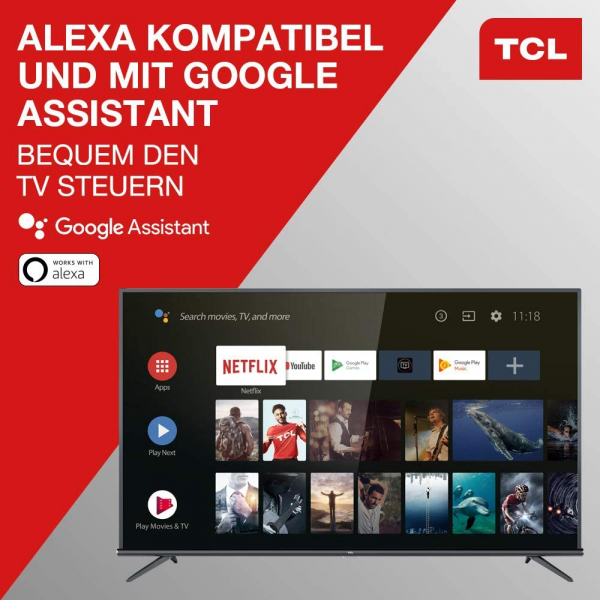
HDR
With a maximum HDR signal of 10,000 cd / m², the Display Tone Mapping used by TCL is quite good. It follows the reference curve while smoothing the signal from 60% to avoid the phenomenon of clipping. The television is especially limited by its peak brightness blocked at 314 cd / m², a value too fair to be able to properly appreciate HDR content. This model is also compatible only HDR10 and HLG. It lacks compatibility with dynamic HDR technologies such as HDR10 + or Dolby Vision which precisely make up for this lack of brightness on entry-level and mid-range televisions. In comparison, the best LCD TVs, such as the Samsung 65Q9FNAT or the Sony 65XF9005, exceed 1,000 cd / m², the Sony 65ZF9 approaches 2,000 cd / m² and the Samsung 75Q900R, the brightest on the market, even exceeds this value.
HDR Film mode provides the best color rendering. The average delta E is measured at 3.2. Surprisingly, the colors are slightly more faithful than in SDR mode, but a hue exceeds 8. The colors displayed by this TV in HDR mode are therefore good overall. Too bad, once again, that the peak of brightness will tarnish the HDR experience.
The TCL 55DP660 television only covers 64% of the Rec.2020 space and 83% of the DCI-P3. Color coverage is quite far from that of high-end models like Q9 or Oled TVs (which reach 75% of Rec.2020 and more than 95% of DCI-P3), but this is acceptable for cinema content - currently mostly mastered in DCI -P3.
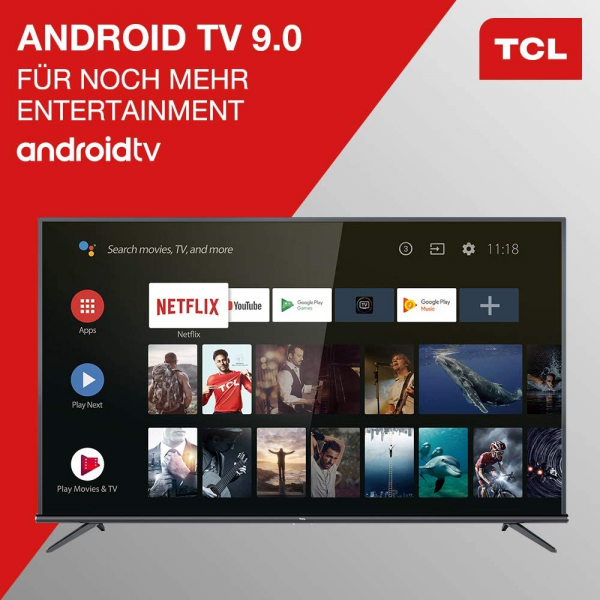
Video games
Beyond 20 ms, the remanence time cannot be considered good. The pixels here take far too long to change state, which results in a rather annoying blur on moving objects. The compensation system is obviously disabled in game mode and therefore has no effect on this point. This TV is very far from the best LCD TVs, like the Samsung 65Q9FN which goes down to 12 ms or the Sony 65XE9005 with its 11.5 ms. In terms of display delay, TCL is not in the lead, but the display delay measured at 27.2 ms results in less than 2 images per second of delay compared to the source (at 60 Hz). There is therefore very little lag between an action on the joystick and its repercussion on the screen. In practice, discomfort is caused when the input lag is greater than 60 ms. In comparison, Samsung TVs go down to 15 ms and the latest LG and Panasonic Oleds to 21 ms.
We are now evaluating color fidelity with the mode that allows the best display delay. If the TCL television does offer a Game mode, the latter is not of much use since the Film mode already allows to have a reduced display delay while maintaining colors close to those of origin, which This is not the case in Game mode. We therefore advise you to simply play in Film mode.
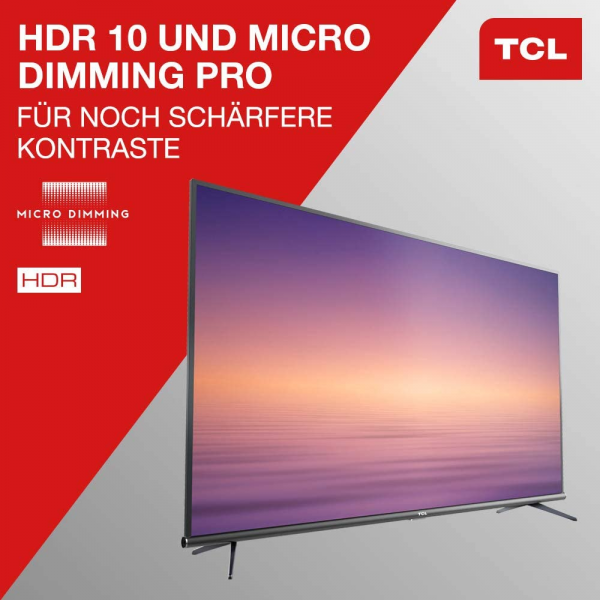
Clouding
This television is content with a single backlight bar, located at the base of the panel. If we did not find a clouding problem on the model we tested, the risk is present, because the diffusion filter is fragile and can be damaged during transport. This results in the appearance of grayish spots on a uniform background. Finally, we did not notice any light leakage on our test model; on the other hand, vertical blooming is sometimes annoying, especially on the subtitles, and more generally on all light objects on a black background.
The average difference in white homogeneity is measured at only 7% on the entire 55-inch panel - the eye does not detect anything below 20%; that's a good number, especially for an Edge Led LCD TV of this size.
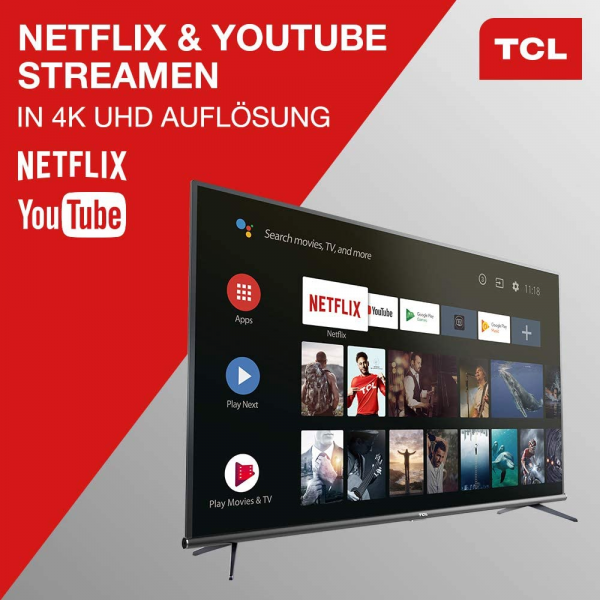
Ergonomics
For its DP660 series, the manufacturer TCL opts for a fairly classic design with eccentric feet. The feet are thin and raise the TV a few centimeters which allows you to place a sound bar without masking the image.
The TCL 55DP660 is not equipped with the best filter on the market and the panel has trouble filtering out reflections. It does a little better than the Samsung UE55NU7105, one of its direct competitors, but it cannot compete with the high-end models.
The TCL 55DP660 has a fairly thin profile, whether at the level of the slab or at the feet. These display a depth of only 22.2 cm, a very limited figure which should allow this television to take place on many TV stands. Only a few televisions have a foot less than 25 cm deep (LG 55B8, Philips 55POS9002F ...).
The rear of the chassis is completely stripped of all artifice. On the left, we find the connection while the power is present on the right. There is no passage provided for the cables and it is therefore necessary to use trickery to make the cables disappear or group together. This model has mounting holes in VESA 200 x 200 format.
The connection consists of three HDMI 2.0a inputs HDCP 2.2 and HDR compatible, two USB ports including a USB 3.0, an optical digital audio output, an Ethernet port, a PCMCIA port (Common Interface CI +), a headphone output, a composite input via the supplied adapter and the TNT, cable and satellite antenna sockets. It is content with a single DVB-T / T2 / C / S / S2 tuner and also has Wi-Fi, but it ignores Bluetooth.
The Android TV system is present in its latest version, 8.0. The layout of the home page has been revised to provide direct access to the content of the various applications. Google's Android system is still as complete and we find most of the flagship applications (Netflix, YouTube, Amazon Prime, Deezer, Spotify, etc.) and many others, such as video players (VLC, KODI, etc.). ). The interface is clear and looks fairly fluid for a model in this price range. The TCL 55DP660 is compatible with Google Cast without having to buy a Chromecast and some applications can also make it AirPlay compatible.
As with all Android TVs, the first start-up is very long. We measured 50 seconds at each first start (when the power is off). It is much longer than Tizen systems from Samsung or WebOS from LG, which start up in less than 5 seconds. Fortunately, the TV wakes up from standby in less than 4 seconds, while consuming less than one watt in standby. As often, the standby is instantaneous. Please note: to activate rapid recovery, you must activate the "Instant start" option in Android (Settings menu> Power) and not in the TV settings.
The TCL 55DP660 comes with a single very basic remote control. Light and long, it is rather practical to use. The rubber keys are nice and make almost no noise. However, it is not equipped with a built-in microphone, essential to make the most of Android TV without having to go through the virtual keyboard to perform searches. At this price, the keys are obviously not backlit.
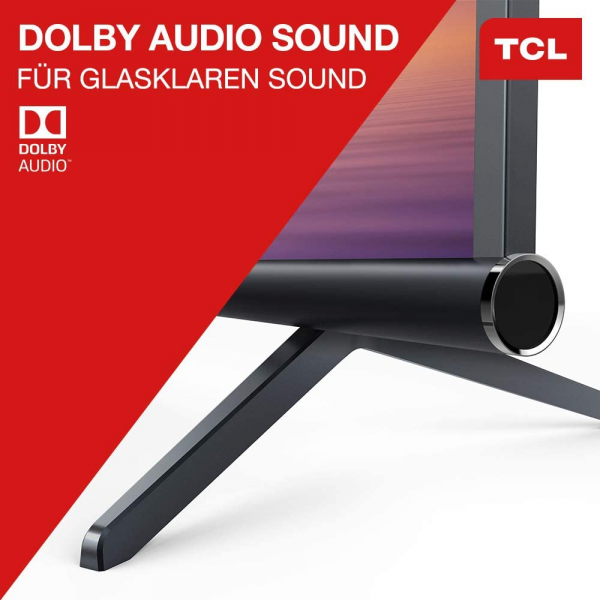
Audio
Tested in store, this TV could not go through our audio laboratory, but a brief listening shows that it does not work miracles. The sound is far from exceptional, however the two 8 W speakers deliver correct sound for television broadcasts. The voices are well reproduced, but it is necessary to make a cross on the bass, the low mids and even a part of the high spectrum. It is better to go through an external system to enjoy better immersion (soundbar, PC speakers or home cinema).
Consumption
We measured consumption at 74 W on our target with a white set to 150 cd / m², which translates into a relative consumption of only 89 W / m². This value is lower than the average of the TVs tested (around 100 W / m²), but this TCL does not do any better than the Sony KD-65XE8505, record-holder of the category with its 56 W / m² or the Samsung QE65Q9FNAT and its 61 W / m². Standby consumption is always less than 1 W.
Conclusion
The TCL 55DP660 is a fairly homogeneous model which offers good image quality in SDR, but it is more limited in HDR. Android TV increases the possibilities of this television tenfold and is fairly fluid on this model. In the end, the TCL 55DP660 mainly suffers from the comparison with the Samsung 55NU7105, better calibrated and sold a little cheaper.
Specifications

